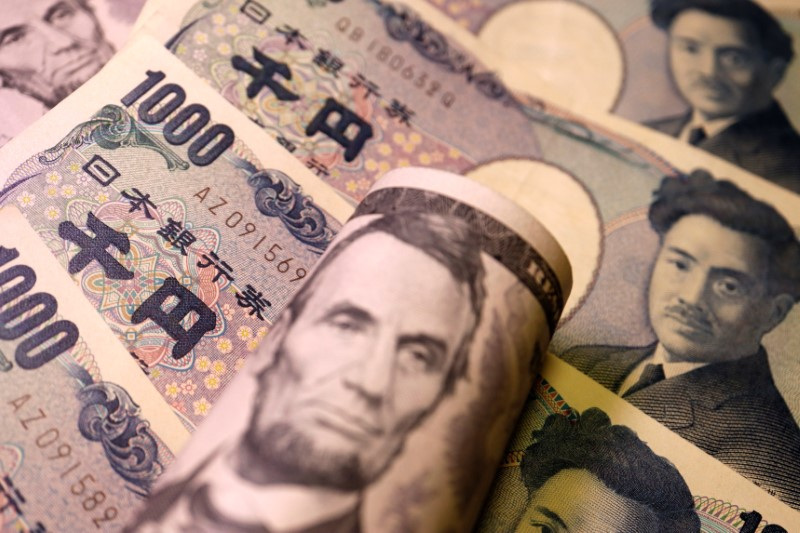The dollar is reeling—yes, reeling—off a one-week high against major currencies this Friday, capping off a week so chaotic it might as well have been scripted by a thriller novelist. Traders, with furrowed brows and coffee-stained desks, are still trying to make sense of the U.S. jobless claims drop and the specter of a looming economic downturn that’s looming so large it might as well have its own gravitational pull.
The almighty U.S. dollar stumbled against the Japanese yen after a three-day sprint upward, only to be checked by Thursday’s employment data that packed more punch than expected. That data, hot off the press, forced traders to rethink—no, to panic—about their bets on whether the Federal Reserve would cut interest rates later this year. The yen, along with its fellow safe haven, the Swiss franc, hung near one-week lows as stock markets tiptoed higher and Treasury yields took a modest dip.
This week has been nothing short of a roller coaster, folks—a chaotic mess kicked off by surprisingly soft U.S. payroll figures that sent global stocks into a nosedive. The yen and the franc soared to their highest levels since the beginning of the year on Monday, as the world clung to these safe havens like a life raft in a storm.
As of the last tick, the dollar slid 0.39% to 146.675 yen, still managing to scrape out its first weekly rise in six agonizing weeks. And the yen? Well, there’s been a mad dash to use it as the market’s new golden ticket to safety amidst the chaos, according to Juan Perez, the trading maestro at Monex USA in Washington.
The dollar index, that trusty gauge measuring the greenback against six other currencies, was down a slight 0.136% at 103.14, giving back gains from the past three days. Meanwhile, against the Swiss franc, the dollar eased 0.18% to 0.865 franc but remains poised for a weekly advance, holding onto that victory like a reluctant hero.
UBS FX strategist Yvan Berthoux chimed in with a sobering note: “The prospect of a pure risk-on environment, pro carry for FX, for the second half of this year, is much less tantalizing now. Our forecasts are more cautious on the dollar/yen and euro/Swiss franc pairs.” Translation? The party may be over before it even started.
Thursday’s data painted a complex picture—new applications for U.S. unemployment benefits fell more than expected, calming fears that the labor market was on the brink of unraveling. The chances of the Fed slashing interest rates by 50 basis points at its next policy meeting took a nosedive to 52% from 69% just a day earlier. Now, the odds of a 25 basis point cut are almost a coin toss at 49%, according to the CME Group’s FedWatch Tool.
Has the Yen’s Short Squeeze Unraveled?
The yen had been on a tear this month, surging to its strongest point since January 2 at 141.675 per dollar on Monday. This rally came as traders hastily unwound short positions, fueled by a surprise rate hike from the Bank of Japan and weak U.S. economic indicators that threw everyone for a loop.
Later today, the U.S. Commodity Futures Trading Commission will release data that will shed light on just how much yen buying has really occurred. Stay tuned—this story is far from over.
As for the euro, it’s been as still as a cat ready to pounce, flatlining at $1.0919—little changed from a week ago. But let’s not forget, on Monday it briefly touched $1.1009, a high not seen since January 2.
Sterling clawed its way up to $1.2756 after a 0.5% overnight rally yanked it from the abyss of a more than one-month low. The Aussie dollar wasn’t as lucky, slipping 0.29% to $0.657. Meanwhile, the New Zealand dollar reached a three-week high of $0.6035 before retreating to its current position at 0.5998.

